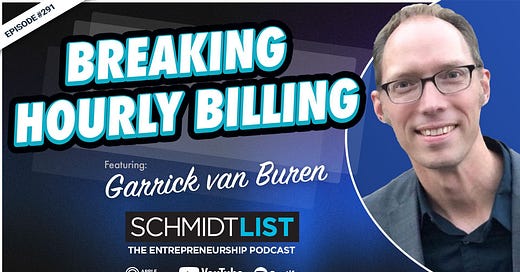Reply and let me know what resonates with you in the conversation.
Price is Always a Comparison
I often see first-time entrepreneurs struggle to appreciate just how wide a solution set their potential customer have to solve the target problem. The problem could be solved; strategically & system-wide (a better but slower quality improvement) or tactically & locally (a worse but faster band-aid).
Here’s a recent example. A couple weeks back, I thought it’d be fun to grab a quick dinner for me and one of the kids from a Wendys drive-thru. The order was screwed up. I suspected this immediately due to the distinct absence even the most basic quality checks in the ordering process.
I don’t know how many other Wendy’s orders were screwed up, but for the sake of this exercise, let’s say it’s 7% of all daily orders at this franchise group’s location. An awkwardly high number to be sure, but a screwed up order can be resolved fairly quickly, inexpensively, and with annoyance as the only real cost.
Maybe word of this reaches the franchisee and they want 0% screwed up orders. There are any number of places they could make an investment to fix this problem:
a new script that includes quality checks for the order taker
supplemental training for the order takers
fire the order takers and hire someone else
fire the manager and hire someone else
install better audio equipment on the customer side
install better audio equipment on the order taker side
outsource the drive thru order taking to a completely remote team
replace the human order taker with an artificial voice bot
introduce a completely different way for the customer to place their order not reliant on audio
introduce a fancy IoT contraption that compares what was ordered against what’s in the bag
absolutely nothing
That’s 10 distinct alternatives plus the status quo. All of these have different price tags and different trade-offs across time-to-value and persistence-of-value.
As I mentioned in For Starters #34, solving the problem requires accurately diagnosing where in it exists in the organization, for addressing it anywhere else is only going to cause more mishegoss. Admittedly in complex organizations, addressing the problem initially in a suboptimal spot (an individual Wendy’s location) is easier than addressing it at the optimal spot (Wendy’s brand experience team). These things are far too often are called ‘pilots’.
Another awkwardness many entrepreneurs face is committing to a specific way of solving the problem (e.g. selling artificial voice bots) without appreciating the franchisee is looking at 10 other options + #wontfix and that this specific way of solving the problem introduces a pile of unquantifiable risk (does each consumer need to consent to order with to a voice bot?)
As a client once mentioned to me, “we lose deals to ‘#wontfix’ more often than we lose to an identified competitor.“
Entrepreneurs can embrace this breadth of options by providing multiple engagement options themselves. Therein turning the customer’s question from the binary “should we work with them?” to the multi-faceted “how should we work with them?” (this widens the customer’s option set efurther and makes a higher percentage of those options you).
But the price is not just compared against all the potential solutions.
Price is first compared against all the other things the company could do with that same money (see Opportunity Cost). Which is to say, #wontfix contains its own vast universe.
One scenario equivalent to #wontfix, at least from the solution-providers perspective is #HaventActuallyDoneAnythingAboutItYet.
Number 3 of the 6 Riskiest Assumption all Ventures face is “We believe customers have tried multiple things to solve [this] already.”
For Starters #3: All Ventures Face the Same 6 Riskiest Assumptions
"If it doesn't kill you it'll make you stronger
If customers haven’t tried multiple things already, every price will be outside their budget, for it will be compared to the $0 they’ve invested to date.
There are techniques to get at the ongoing costs of a persistently frustrating problem and calculating a price against them, but it’s all theoretical unless the customer has tried something. Anything. No matter how small. Even a small anything provides a baseline for comparing price and expected results against every subsequent potential solution. Including the one you offer.
There are always strategic reasons to do nothing. Especially in businesses with seemingly endless hierarchies and matrix-ed incentives like a franchise QSR. A few common reasons:
there’s a larger effort that when live will eliminate this smaller problem.
we’re preparing to end-of-life this product line.
we’re testing interventions in multiple locations and this location is the control.
we’re preparing to shutter this location.
we’re deliberately using this problem as an indicator of something else (e.g. an up-stream quality intervention).
Which leads me to the second thing I often see from first-time entrepreneurs, addressing too small a customer problem. Especially because small problems can quickly appear to scale up to large problems. Oh, the number times I see this assertion in pitch deck’s market sizing slide.
“If we assume every QSR screws up 7% of the orders that’s a massive total addressable market, we only need to capture 5% to be gazillionaires!”
First, no, not how that works. Second, large problems tend to scale into even larger problems.
Sooooo, maybe pick a larger problem one as it’s easier to charge more.




